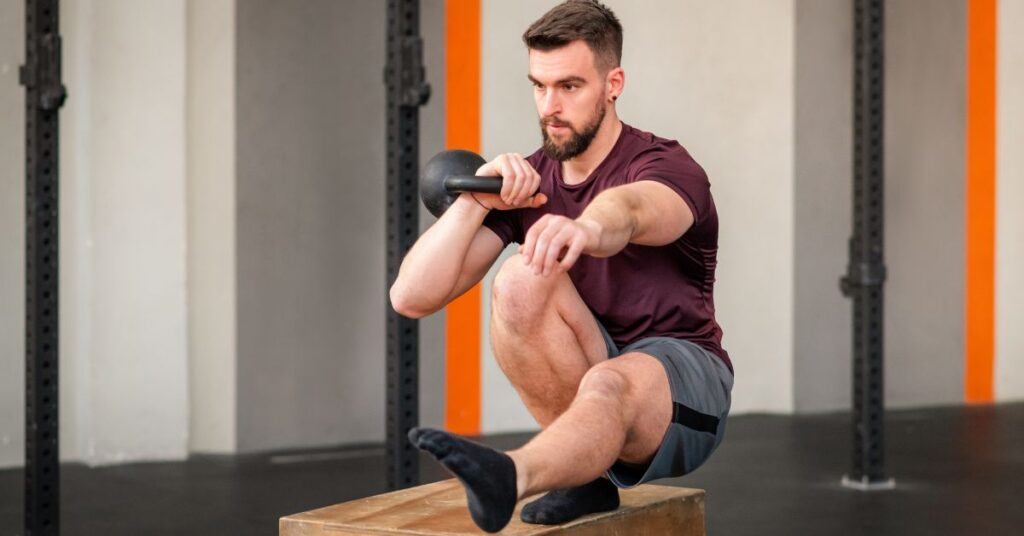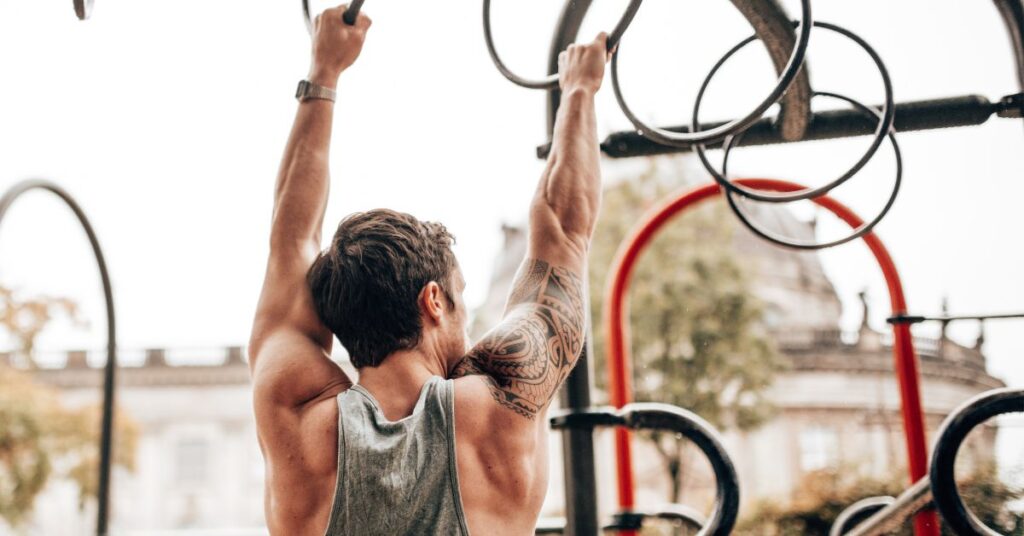Calisthenics pull workout represents the cornerstone of upper body strength development in bodyweight training, offering unparalleled benefits for athletes and fitness enthusiasts alike. These fundamental movement patterns target your back, biceps, and grip strength while building functional power that translates directly to real-world activities and athletic performance. Through extensive training experience with hundreds of clients, mastering calisthenics pull workout movements transforms not only physical strength but also posture, confidence, and overall athletic capability in remarkable ways. The beauty of calisthenics pull workout training lies in its accessibility and effectiveness, requiring minimal equipment while delivering maximum results. Whether you’re a complete beginner struggling with your first assisted pull-up or an advanced athlete pursuing one-arm variations, understanding proper progression and technique in your calisthenics pull workout routine will unlock new levels of strength and movement quality that extend far beyond the gym environment.

What Is a Calisthenics Pull Workout?
Discover the fundamental pulling movements that form the backbone of bodyweight training and their importance for balanced development.
Understanding Pull Movements in Calisthenics
A calisthenics pull workout focuses on exercises where you pull your body toward a fixed object using only bodyweight resistance. These movements primarily engage posterior chain muscles, creating pulling motion that counteracts daily pushing activities. Unlike traditional equipment, calisthenics exercises utilize gravity and body positioning for resistance.
Pull movements in your calisthenics workout are compound exercises engaging multiple muscle groups simultaneously, creating synergistic strength for real-world power. Those who master calisthenics pull workout techniques develop superior grip strength, better posture, and reduced shoulder pain.
Why Calisthenics Pull Workouts Matter for Total-Body Strength?
Modern life creates muscular imbalances through forward-reaching activities like typing and smartphone use. Calisthenics pull exercises counteract these imbalances by strengthening posterior chain muscles that keep shoulders back and spine aligned. Consistent calisthenics pull workout training improves daily movement quality and reduces back pain within weeks.
Pull movements in your calisthenics workout develop functional grip strength transferring to every exercise and daily activity, becoming the foundation for all upper body calisthenics exercises.
Muscles Worked in Calisthenics Pull Workout Exercises
Understanding targeted muscle groups helps optimize your calisthenics workout approach and ensures balanced development throughout your calisthenics pull workout routine.
Back Muscles: Lats, Traps, and Rhomboids
The latissimus dorsi serves as the primary mover in most pulling exercises, creating V-taper appearance and providing power for vertical pulls. Middle and lower trapezius muscles work with rhomboids to retract shoulder blades, creating proper posture and stability.
Proper lat engagement transforms pull-up performance dramatically. Learning to initiate pulls from lats rather than arms typically doubles pull-up numbers within months.
Arm Engagement: Biceps, Forearms, and Grip
Biceps act as powerful assistors in all pulling movements, particularly during chin-ups. Forearm muscles work continuously maintaining grip strength throughout sets, developing functional grip extending beyond workouts.
Grip strength often becomes the limiting factor in pull progression. Training grip through varied positions consistently achieves better results in all pulling movements.
The Supporting Cast: Shoulders and Core Muscles
Posterior deltoids and rotator cuff muscles stabilize shoulders throughout pulls, preventing injury and ensuring proper mechanics. Core muscles work isometrically maintaining body position, especially during advanced variations.
Core engagement during calisthenics pull exercises creates tremendous functional strength, improving plank holds and reducing back pain through proper tension during calisthenics pull workout sessions.
Top 10 Calisthenics Pull Workout Exercises to Build Upper Body Power

A well-designed calisthenics pull workout targets the major upper-body muscles responsible for pulling strength, posture, and control. By understanding which muscles are activated, you can refine your technique, avoid imbalances, and unlock better results from each session.
1. Pull-Ups: From Basics to L-Sit and Explosive Variants
Pull-ups target lats, middle traps, and biceps with unmatched efficiency. Hang from bar with hands wider than shoulders, pull chest toward bar while engaging core. Advanced variations include L-sit and explosive pull-ups developing power.
2. Chin-Ups vs Pull-Ups: What’s the Difference and Which to Choose
Chin-ups use underhand grip emphasizing biceps while engaging back muscles. This variation feels more natural for beginners and allows stronger initial performance. Alternating between both throughout training weeks is recommended.
3. Inverted Rows (Australian Pull-Ups): The Best Beginner Pull Movement
Inverted rows allow difficulty adjustment through body angle. Position under bar, pull chest toward bar maintaining straight body line. This exercise builds initial pull strength and teaches proper mechanics.
4. Neutral Grip Pull-Ups: Joint-Friendly Strength Training
Neutral grip pull-ups use parallel handles reducing wrist and shoulder stress while providing excellent activation. This position allows greater range of motion and works excellently for those with joint issues.
5. Resistance Band Face Pulls: Targeting the Rear Delts
Face pulls target rear deltoids and middle trapezius using resistance bands. Pull toward face while squeezing shoulder blades together. This addresses forward head posture and improves shoulder mobility.
6. Bodyweight Curls and Superman Rows: Isolation Without Equipment
Bodyweight curls involve lying under bar and curling body upward using bicep strength. Superman rows target middle traps by lying face-down and rowing arms backward. These provide targeted activation without equipment.
7. Archer Pull-Ups: Unilateral Strength Development
Archer pull-ups involve pulling primarily with one arm while the other assists minimally. This develops tremendous single-arm strength preparing for one-arm pull-up progression.
8. Commando Pull-Ups: Multi-Directional Strength
Commando pull-ups involve pulling head alternately to each bar side, creating multi-directional strength. This challenges core stability while developing pulling power from various angles.
9. Towel Pull-Ups: Grip Strength Maximizer
Towel pull-ups involve gripping towel ends draped over bars instead of the bar directly. This dramatically increases grip demands while providing unique pulling angles and greater forearm activation.
10. Wide-Grip Pull-Ups: Lat Width Emphasis
Wide-grip pull-ups use hand position significantly wider than shoulders, emphasizing outer lat portions. This creates classic V-shaped back appearance while challenging grip strength significantly.
Benefits of Incorporating Calisthenics Pull Workout into Your Exercise Session
![]()
Adding a calisthenics pull workout to your regular training plan offers far-reaching benefits beyond just back and bicep gains. From building functional strength to improving posture and body control, pull-based exercises are essential for a balanced, powerful physique.
1. Building Functional Strength for Real-Life Movements
Calisthenics pull exercises develop strength patterns transferring to daily activities like climbing and carrying. Unlike isolation exercises, pull movements in your calisthenics workout train multiple muscles working together as in real scenarios, creating strength improving quality of life.
2. Improving Posture and Spinal Alignment
Regular calisthenics pull workout training counteracts forward head posture and rounded shoulders. Strengthening posterior chain muscles naturally draws shoulders back and aligns spine properly, reducing neck tension and back pain.
3. Enhancing Core Stability and Injury Prevention
Every calisthenics pull exercise requires significant core engagement maintaining body position and transferring force effectively. This develops functional stability preventing lower back injuries and improving movement quality in your calisthenics workout routine.
4. Boosting Athletic Performance Without Weights
Pull strength forms foundation for numerous athletic movements from swimming to martial arts. The explosive power and grip strength developed through calisthenics exercises transfers remarkably to sport-specific skills in your overall calisthenics workout program.
5. Accessible and Equipment-Free Upper Body Gains
Minimal equipment requirements make calisthenics pull exercises accessible anywhere. A pull-up bar or sturdy structure provides excellent training opportunities, eliminating barriers to consistent calisthenics workout training.

Calisthenics Pull Workout: How to Progress from Beginner to Advanced Stage?
Progressive overload in your calisthenics workout applies through exercise modifications, volume increases, and advanced movement patterns in your calisthenics pull workout routine.
Starting Out: Assisted Pull-Ups and Inverted Rows
Beginners start with assisted pull-ups using resistance bands reducing bodyweight load while learning proper patterns. Inverted rows provide foundation allowing angle adjustments matching current strength levels.
Mid-Level Moves: Standard Pull-Ups, Chin-Ups, and Increased Volume
Once achieving 5-8 solid pull-ups, focus on increasing volume through additional sets maintaining perfect form. Alternate between pull-ups and chin-ups developing balanced strength while exploring different grips.
Elite Variations: Weighted Pull-Ups, Explosive Movements, and High Volume Rows
Advanced trainees add external weight continuing strength progression. Explosive pull-ups develop power while archer pull-ups build unilateral strength toward one-arm goals.
Sample Calisthenics Pull Workout Routine You Can Try Today
This calisthenics pull workout routine provides structure for implementing pull training effectively with modifications based on fitness level.
Complete Strength-Building Pull Day Program
Warm-up: Arm circles, shoulder squeezes, dead hangs, band pull-aparts Main Workout: Pull-ups (4×5-12), Inverted rows (3×8-15), Chin-ups (3×5-10), Face pulls (3×12-15), Bodyweight curls (2×8-12), Superman rows (2×10-15) Cool-down: Chest stretches, lat stretches, dead hang
Reps, Sets, and Rest Times for Each Exercise
Rest 60-90 seconds between sets for strength, 30-60 seconds for endurance. Beginners prioritize form over speed, taking longer rest maintaining proper technique throughout sets.
Add This Pull Routine to Your Weekly Calisthenics Split
Integrate calisthenics pull workout training 2-3 times weekly, allowing 48 hours recovery between sessions. Pair with leg training or use as active recovery between push sessions in your calisthenics exercises routine.
Circuit Training for Calisthenics Pull Workout Days
Circuit training maximizes efficiency while maintaining high intensity through strategic combinations and minimal rest in your calisthenics workout.
Sample Pull Circuit: Explosive, Neutral, and High Row Combinations
- Circuit A: Pull-ups (30s), Inverted rows (30s), Dead hang (30s), Rest (60s) – 3 rounds
- Circuit B: Chin-ups (45s), Face pulls (45s), Bodyweight curls (45s), Rest (90s) – 3 rounds
How to Fit Pull Workouts into a Push-Pull-Legs Calisthenics Plan
Push-pull-legs split provides excellent recovery grouping similar patterns together in your calisthenics exercises routine. Pull days focus on posterior chain while push days target anterior muscles, allowing higher training frequencies in your calisthenics workout.
Best Practices for Effective Calisthenics Pull Workout Training
Implementing proper technique ensures optimal results while minimizing injury risk throughout your calisthenics exercises journey.
Focus on Form: Avoiding Shoulder Shrugs and Swinging
Proper form begins with shoulder blade depression and retraction before pulling. Avoid shrugging shoulders or using momentum. Each rep demonstrates controlled movement through full range.
Control the Eccentric Phase: Slow Lowers for More Growth
The lowering portion provides exceptional strength-building stimulus when performed slowly. Aim for 2-3 second eccentric phases maximizing muscle recruitment and strength development.
Don’t Forget the Core: Engaging Your Midsection During Pulls
Maintain rigid core tension throughout calisthenics exercises improving force transfer and preventing energy leaks. Think about pulling belly button toward spine while maintaining normal breathing during your calisthenics workout.
Rest, Recovery, and Training Frequency Tips
Allow 48-72 hours between intensive sessions permitting complete recovery. Adequate sleep, nutrition, and stress management significantly impact recovery capacity and progress.
Conclusion
Calisthenics pull workout mastery creates the essential foundation for total-body strength, improved posture, and advanced movement skills that extend far beyond basic fitness goals and into every aspect of daily life. The functional strength developed through consistent calisthenics pull workout training transforms ordinary daily activities while building impressive physique development that speaks to dedication and proper programming. Through systematic progression, meticulous technique refinement, and unwavering consistent practice, calisthenics exercises become the cornerstone of complete physical development that serves you throughout life’s challenges and adventures. The journey from struggling with assisted pull-ups to performing advanced variations like archer pull-ups or explosive movements represents more than just physical progress—it embodies the development of mental resilience, body awareness, and the confidence that comes from mastering your own bodyweight. Embrace the calisthenics pull workout approach, commit to consistent practice, and watch as these fundamental movements revolutionize not only your strength levels but your entire approach to fitness and movement quality.
Explore these effective Bodyweight Exercises for Beginners to build strength and confidence from day one.
Whether you’re aiming for your first pull-up or training toward advanced moves like the front lever or one-arm pull-up, mastering your calisthenics pull workout is the key to unlocking upper-body strength and control. Train smarter at ISC – Indian School of Calisthenics, Mumbai’s leading destination for skill-based bodyweight training. Visit us at SRPF Ground, NH8, Goregaon (E), Mumbai – 400065. For class schedules, personalized coaching, or more details, call +91 77159 53218. Train smart, move better, and unlock your back strength with ISC.
Calisthenics Pull Workout - FAQs
How often should I do calisthenics pull workouts?
Train pulling movements 2-3 times weekly with 48-hour rest periods between sessions for optimal strength development and recovery.
Can beginners start with calisthenics pull exercises immediately?
Yes, beginners should start with assisted pull-ups and inverted rows to build foundational strength before progressing to unassisted movements.
What's the difference between pull-ups and chin-ups in calisthenics workout?
Pull-ups use overhand grip emphasizing lats, while chin-ups use underhand grip for greater bicep involvement and easier progression.
How many pull-ups should I aim for as a beginner?
Focus on 1-5 quality repetitions initially, prioritizing proper form over quantity for safe and effective strength building progression.
Do calisthenics exercises require special equipment for pull workouts?
Only a pull-up bar or equivalent sturdy overhead structure is needed, making calisthenics pull training accessible virtually anywhere.
How long does it take to see results from pull training?
Strength improvements typically appear within 2-4 weeks, with visible muscle development and postural changes occurring within 6-8 weeks.
Can pull workouts help with back pain and posture?
Yes, regular pull training strengthens posterior chain muscles, counteracting forward posture and significantly reducing upper back pain.
What are the best calisthenics pull exercises for building width?
Wide-grip pull-ups, archer pull-ups, and various rowing movements effectively develop lat width and create impressive back development.
Should I combine push and pull exercises in the same workout?
Either approach works effectively; separate sessions allow greater focus while combined sessions provide balanced muscle development efficiently.
How do I progress from assisted to unassisted pull-ups?
Gradually reduce assistance through band tension reduction, negative repetitions, and increased inverted row volume over 4-8 weeks consistently.


